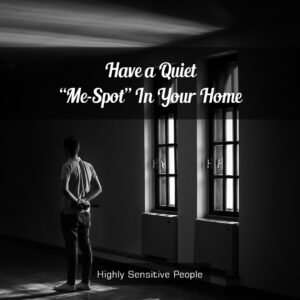
Your workplace and home are places you spend a lot of time, so if those environments are set up to cause you conflict, they can add to your stress levels. For instance, if you live or work in a cluttered area, you may find yourself spending a good portion of your time searching for items, taking away from time with family at home or reducing your productivity at work.
If you struggle with organization, improving this skill can be an effective first step in reducing stress.
How Does the Environment Affect Stress?
Environmental factors have a significant impact on stress levels:
- Noise and Crowding: Crowded, noisy settings can lead to sensory overload, raising cortisol levels and causing anxiety.
- Natural Spaces: Serene environments, like parks or open spaces, promote relaxation and lower stress.
- Air Quality & Lighting: Poor ventilation or harsh lighting can increase discomfort and stress, while fresh air and natural light are calming.
Overall, the environment can shape our physiological and psychological responses to stress.
What Are the Environmental Influences on Stress?
Beyond physical spaces, other environmental factors can intensify stress:
- Noise Pollution: Constant noise, especially in workplaces or urban areas, can be overwhelming.
- Privacy & Support: Lack of privacy or hostile social environments contribute to stress.
- Community Factors: Economic inequality, urban density, and safety concerns impact stress levels by affecting how secure or stable people feel.
How Does Nature Affect Stress?
Nature plays a powerful role in stress reduction:
- Lower Cortisol Levels: Exposure to green spaces, like parks, helps lower cortisol levels.
- Improved Mood: Natural elements, such as trees and water, calm the mind and offer a break from daily pressures.
- Physical Benefits: Brief exposure to nature can reduce heart rate and anxiety.
Nature provides a simple, accessible way to manage stress and improve well-being.
Can Your Environment Cause Anxiety?
Yes, your environment can be a significant factor in triggering anxiety:
- Chaotic Spaces: Unpredictable or disorganized spaces make people feel out of control, often leading to anxiety.
- Overstimulation: Persistent noise, screens, and crowds can amplify anxiety.
- Calming Changes: Simple steps like decluttering or adding calming decor can ease environmental anxiety triggers.
How Your Environment Affects Your Mental Health
Mental health is deeply connected to your surroundings:
- Organization: Clean, organized spaces foster calm and focus, while clutter leads to frustration and mental fatigue.

- Social Environment: Supportive relationships and positive spaces enhance resilience, while toxic environments worsen mental health.
- Natural Elements: Exposure to sunlight and green spaces is linked to improved mood and lower depression symptoms.
How Does Your Environment Affect Your Personality?
The environment also shapes personality by influencing daily experiences and reactions:
- Supportive Environments: Encouraging settings promote confidence and adaptability.
- Restrictive Environments: Stressful or crowded spaces can lead to anxiety or introversion.
- Physical Space: Spacious, well-lit areas encourage openness, while cramped spaces may foster introversion.
How Does Your Environment Affect Your Health?
Environmental conditions can directly impact physical health:
- Air Quality: Polluted areas increase respiratory issues and allergies.
- Noise Levels: Chronic noise can disturb sleep and raise cardiovascular stress.
- Access to Green Spaces: Nature supports immune function, lowers blood pressure, and encourages physical activity.
A healthy environment contributes to better overall physical well-being.
How Does the Environment Affect Human Behavior?
Environmental cues can promote or restrict behavior:
- Comfortable Spaces: Support collaboration and positive interactions.
- Restrictive Environments: May lead to avoidance, irritability, or aggression.
- Design Elements: Lighting, layout, and atmosphere all influence how people behave and interact.
Creating environments that support well-being encourages positive behaviors.
How Does Your Environment Affect Your Life?
Your environment impacts nearly every part of your life:
- Mood & Productivity: A well-organized space can increase focus, while chaos hinders concentration.
- Long-Term Health: Supportive environments lead to improved physical and mental health.
- Quality of Life: Over time, living or working in a positive environment improves life satisfaction.
Environments that consistently cause stress may contribute to chronic health issues over time.
How Your Home Environment Affects Your Mental Health
The home environment plays a crucial role in mental health:
- Clutter & Chaos: Messy environments can contribute to stress, while organized spaces foster relaxation.
- Calming Decor: Adding natural light, plants, and comfortable furnishings enhances a sense of peace.
- Mental Well-Being: A supportive home environment is essential for relaxation and mental health.
Mental Environment Examples
 Mental environments include the thoughts, beliefs, and attitudes we encounter daily:
Mental environments include the thoughts, beliefs, and attitudes we encounter daily:
- Positive Workplaces: Spaces fostering openness and collaboration create a positive mental environment.
- Negative Environments: Hostility or negativity contributes to stress.
- Social and Cultural Influence: Support systems, cultural attitudes, and media consumption shape our mental environment.
Risk Factors for Mental Ill Health Outside Work or School
Outside of structured settings, certain factors increase mental health risks:
- High-Crime Neighborhoods: Unsafe areas create chronic stress and insecurity.
- Lack of Green Spaces: Limited access to nature can contribute to poor mental health.
- Isolation and Financial Instability: Both can heighten risks for depression and anxiety.
Community support, mental health resources, and safe, accessible spaces can help reduce these risks.
By understanding the impact of the environment on stress, mental health, and behavior, we can create spaces that foster relaxation, productivity, and overall well-being.

